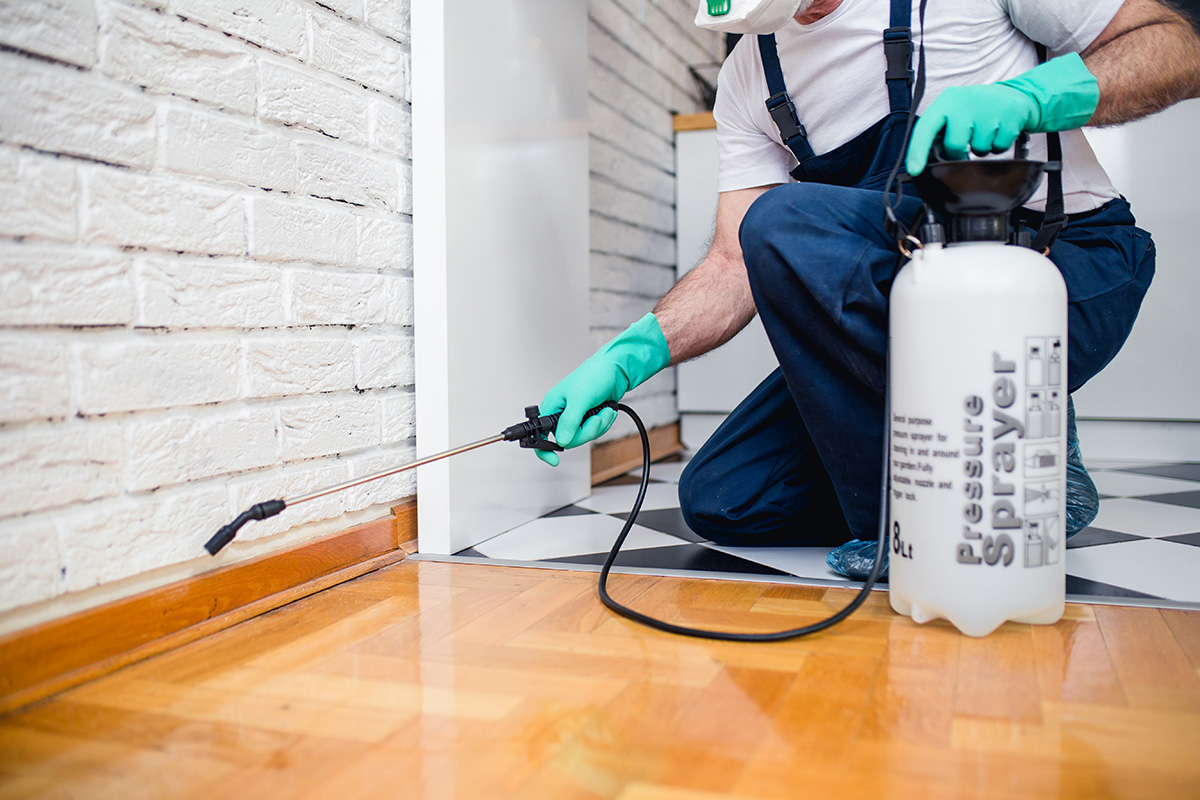Experienced A1 Exterminators Charlotte NC - Quick and Trusted Solutions
Bed Pest Treatment Malfunction: Comparing Chemical Vs. Non-Chemical Solutions
In the world of bug control, particularly when taking care of the relentless problem of bed pests, the choice between chemical and non-chemical therapy options can be a crucial one. Both methods supply distinct benefits and downsides, influencing elements such as efficiency, safety and security factors to consider, and general price. By examining the nuanced details of each approach, a clearer understanding of which course to seek in addressing a bed bug problem can be achieved.
Efficiency of Chemical Therapies
Chemical therapies for bed bug infestations have actually been commonly acknowledged for their rapid and powerful effectiveness in removing these insects. When considering the performance of chemical therapies, it is critical to comprehend that they can offer a thorough and fast solution to a bed pest problem.
Moreover, chemical treatments have the benefit of offering recurring effects, implying that they can continue to get rid of bed bugs also after the preliminary application. This residual activity is particularly valuable in combating any type of prospective re-infestations. Additionally, the fast activity of chemical treatments can bring alleviation to people encountering severe bed bug infestations, enabling them to reclaim control of their living rooms rapidly.
Safety And Security Worry About Chemical Solutions
One critical element that calls for cautious factor to consider when utilizing chemical solutions for bed pest treatment is guaranteeing the safety of passengers and the atmosphere. Direct exposure to particular chemicals made use of in bed bug therapies can lead to breathing issues, skin irritability, or various other adverse responses, particularly in people with pre-existing conditions or level of sensitivities.
Additionally, the environmental impact of chemical solutions is an additional significant factor to consider. Some chemicals made use of in bed pest therapies may be damaging to beneficial insects, wildlife, and ecosystems if they leach right into the soil or water supply. It is necessary to use chemical treatments deliberately, following security standards, and thinking about much less toxic choices to mitigate these risks and make sure the reliable and secure management of bed bug problems.
Benefits of Non-Chemical Approaches
Taking into consideration the potential security worries and environmental effect connected with chemical solutions for bed bug therapy, discovering non-chemical approaches presents an appealing option with a number of unique advantages. Non-chemical techniques offer a more secure option for households, especially those with kids, individuals, or pets conscious harsh chemicals. These methods eliminate the threats of exposure to harmful compounds, decreasing the potential for negative health impacts. Moreover, non-chemical treatments are eco-friendly, as they do not add to air or water air pollution, making them a lasting option for insect control.
Additionally, non-chemical options can be reliable in targeting bed insects, including hard-to-reach areas where chemical treatments may not pass through - A1 exterminator charlotte nc. Techniques such as heat treatment, vacuuming, vapor cleaning, and cushion encasements supply detailed elimination without the usage of damaging chemicals.
Limitations of Non-Chemical Treatments

Furthermore, non-chemical therapies commonly require several applications to attain successful elimination. This can be taxing and might not always guarantee complete elimination of all bed bugs and their eggs, especially in concealed or hard-to-reach areas.
Additionally, the success of non-chemical treatments heavily relies upon proper application and thoroughness, which can be challenging for people without professional knowledge. Insufficient application of non-chemical approaches might result in insufficient obliteration, resulting in consistent invasions and the demand for additional therapies.
Therefore, while non-chemical treatments have their advantages, it is necessary to acknowledge these restrictions and consider them when identifying the most efficient strategy for taking care of bed bug invasions.
Expense Comparison: Chemical Vs. Non-Chemical Options
Offered the constraints associated with non-chemical therapies, a vital aspect to evaluate in the context of bed pest administration is the expense comparison in between chemical and non-chemical choices. Chemical treatments commonly involve the application of pesticides by professionals, which can vary from see page $250 to $900 per area, relying on the intensity of the invasion and the dimension of the location to be dealt with. On the other hand, non-chemical treatments like warmth treatment or vapor can be more pricey, with prices ranging from $1,000 to $6,000 for an entire home. While the initial cost of chemical therapies might seem lower, several treatments might be needed to fully eliminate the invasion, potentially raising the general cost. On the various other hand, non-chemical options might offer a more environmentally friendly and sustainable remedy, although they can be cost-prohibitive for some individuals. Inevitably, when considering the expense of bed insect treatment choices, it is essential to consider the in advance costs versus the performance and long-lasting sustainability of the chosen technique.
Conclusion

Considering the potential safety and security issues and ecological impact connected with chemical options for bed pest therapy, exploring non-chemical techniques provides an encouraging option with numerous distinct benefits.Provided the constraints associated with non-chemical therapies, a vital facet to assess in the context of bed insect monitoring is the cost comparison in between chemical and non-chemical alternatives. In comparison, non-chemical therapies like heat therapy or vapor can be more expensive, with expenses ranging from $1,000 to $6,000 for a whole home. While the initial expense of chemical therapies might appear reduced, numerous treatments may be needed to completely get rid of the problem, possibly increasing the overall expense.In final thought, when comparing chemical and non-chemical bed insect treatment alternatives, it is necessary to consider effectiveness, safety, benefits, constraints, and cost.